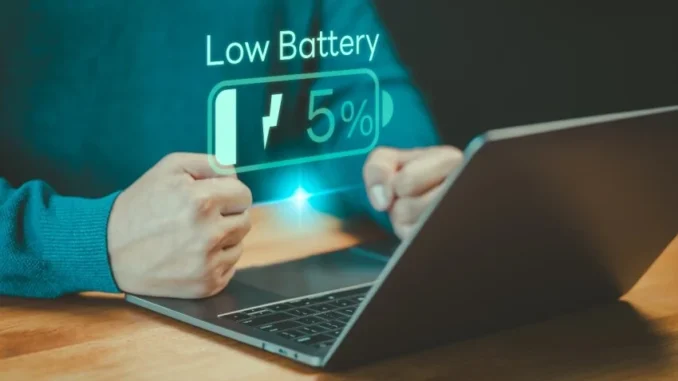
If your laptop is plugged in but not charging, it can be frustrating and worrying. Follow these steps to diagnose and resolve the issue:
1. Check Basic Connections
- Ensure the power source works: Plug a different device into the outlet to confirm it’s supplying power.
- Inspect the charging cable: Look for fraying, kinks, or other damage.
- Verify the adapter and port: Ensure the adapter is fully connected to the laptop and that the charging port is free of debris.
2. Examine the Charger
- Use the correct charger: Verify that you’re using the original or manufacturer-recommended charger.
- Test another charger: If possible, use a compatible charger to determine if the issue is with your current one.
- Check the power brick: Feel if it’s heating up; a faulty adapter might not deliver power.
3. Look at the Battery
- Check the battery status: In Windows, hover over the battery icon in the taskbar. On macOS, go to the battery menu.
- Remove and reinsert the battery (if removable): Reconnect the battery to rule out poor connection issues.
- Test without the battery: If the laptop powers on without the battery but doesn’t charge it, the battery might need replacement.
4. Update Software and Drivers
- Update battery drivers: On Windows, go to Device Manager → Batteries → Microsoft ACPI-Compliant Control Method Battery and update the driver.
- Install updates: Ensure your operating system is up-to-date. Firmware and BIOS updates might resolve compatibility issues.
5. Inspect Power Settings
- Adjust power plans: Incorrect power settings might prevent charging.
- Reset power management: In Windows, go to Device Manager, uninstall the battery drivers, then restart the laptop.
6. Test the Hardware
- Run diagnostic tools: Many laptops come with built-in diagnostic software accessible from the BIOS or during startup.
- Check for overheating: If the laptop is too hot, charging might stop to prevent damage.
- Examine the charging port: A loose or damaged port can prevent charging.
7. Seek Professional Help
If you’ve tried the above steps and your laptop still won’t charge:
- Contact the manufacturer: If your laptop is under warranty, reach out for support.
- Visit a technician: A professional can test internal components like the motherboard or charging circuits.
Addressing the issue promptly will help prevent further damage and ensure your laptop stays functional.
Has this ever happened to you? Your laptop informs you the battery is nearly dead. You then rush to find your charger and plug it in, only to get nothing. No glowing lights, no brightened display, and no “battery charging” icon. If you plug in your laptop and find that it’s not charging, what should you do?
When it comes to laptop batteries, there are multiple things that can fail. Some are easy to fix yourself with a software tweak or even a new battery, but other problems may require a visit to a repair shop or even a full-blown system replacement. Knowing which is which can save you hours of frustration and hundreds of dollars in repairs. Here’s how to quickly troubleshoot the issue and narrow down the problem to find the most economical solution.
To find out whether or not the problem even has anything to do with the laptop at all, try plugging the power cord into a different outlet. If it’s plugged into a surge protector or power strip, take it out and plug it directly into the wall. This will tell us if there’s an issue with the laptop or if you have a short or a blown fuse.
If it still doesn’t work, we’ve determined that there is a real issue with powering the laptop. Now it’s simply a matter of figuring out where the problem may be. That begins with eliminating where it isn’t.
Leave a Reply